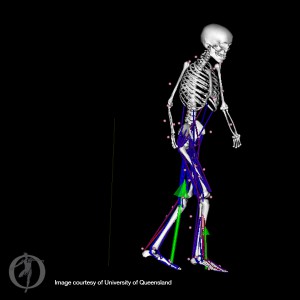 Researchers in Queensland are using computer modelling to assist those with cerebral palsy to move more easily. The project will examine the effectiveness of medical interventions on muscle development and function, according to Dr Glen Lichtwark from the University of Queensland’s School of Movement Studies. “We are simulating and predicting how surgery, strength training and other treatments could improve muscle function in these patients,” he said.
Researchers in Queensland are using computer modelling to assist those with cerebral palsy to move more easily. The project will examine the effectiveness of medical interventions on muscle development and function, according to Dr Glen Lichtwark from the University of Queensland’s School of Movement Studies. “We are simulating and predicting how surgery, strength training and other treatments could improve muscle function in these patients,” he said.
Because cerebral palsy affects part of the brain that controls movement it affects posture and muscle coordination. As a result patients often need medical treatment and surgery to maintain mobility and manage muscle weakness, spasticity, joint stiffness and reduced muscle control.
Previously is has been difficult to establish the impact surgery had on walking or determining which treatments would address specific impairments. “Our researchers have begun developing models to examine the impact of muscle tightening and weakness on walking and movement using ultrasound technology for the first time combined with patient specific data,” Professor Lichtwark told F2L.
He said the computer modelling allows researchers to make ‘virtual’ changes, including lengthening muscles or increasing strength, and to identify if particular treatments will improve the patient’s ability to move more freely. “We will explore how cerebral palsy affects muscle function and physical activity from childhood through to adulthood. Currently this is not well understood.”
The research team is also seeking volunteers, specifically older participants with cerebral palsy, for a study to examine how muscle strength and stiffness deteriorates over time, and the impact this has on physical activity and function. The study is on-going until 2015.
About 34,000 people are living with cerebral palsy in Australia.
For more information on joining the study go to: g.lichtwark@uq.edu.au or 07 3365 3401 or facebook.com/cpmuscleresearch
